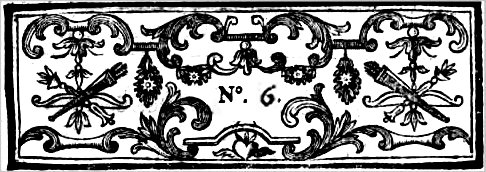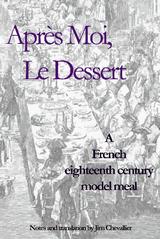|

GOOGLE: Print->Book Search
The Google tool formerly known as Google Print is now Google Book Search, and can be found in their list of tools. Other than that, I can't see a change.
Of more general interest (for those with Web sites) is the new "Google Analytics" tool: https://www.google.com/analytics/home/. If you've never run stats on your own site, it's almost always a revelation (I recently discovered that hackers were still using an old postcard routine I thought I'd disabled years ago.) There are some free packages out there, but often they either require a logo on your site or are very technical. So this will be a boon to some, though it does require you to know enough code to be able to add some on
each page.

|
LINKS: Early America
This seems a fitting week to discover this site:
http://earlyamerica.com/
Here at Archiving Early America, you will discover a wealth of resources -- a unique array of primary source material from 18th Century America. Scenes and portraits from original newspapers, maps and writings come to life on your screen just as they appeared to this country's forebears more than two centuries ago.

FOOD HISTORY: Croissant 2
It looks like after a list member has found a reference in English that predates the OED, it might be time to nudge the TLF as well. I was so focused on the Oxford Companion to Food's article on culinary myths that I brushed over the main article on croissant - which cites an 1853 reference in Payen's Des substances alimentaires, where, along with English muffins, croissants were listed as 'breads of fantasy and luxury' (which suggests how exclusive they would have been at the time.) Gallica only has a later version of this work, with this entry:
In upscale bakeries they still prepare, and ordinarily in the semi-circular form of a roller folded in, drawn at each end, small breads called croissants. The liquid used to form the dough with 1 kilogram of flour is made with one or two eggs beaten and mixed with about 500 grams of water. Otherwise the choice of the flour, the dose of yeast, as well as the working of the dough,
require the same care as with other luxury breads mentioned above.
(355)
A world of questions lingers in that "still prepare", which suggests this dates from much earlier times - such as Marie-Antoinette's? Yet no reference from anywhere near her time has appeared so far.
UPDATE (4/09, 5/09): An answer at last!
Having forged on since uncovering the above (and now somewhat superseded, if not exactly outdated) information, I have discovered just WHO brought the croissant to Paris (August Zang), and when (1839, though some say 1838). It's quite a story, and quickly outgrew the Web page I'd planned for it - hence this new work, available HERE and also for the Kindle:
Otherwise, for more about the croissant, the kipfel and the book, visit the page for the book.
|


18th CENTURY RECIPE: Turkey
It would be fun if I could do this every week, but realistically it will depend on my free time to translate (or transcribe) recipes from our period. I'm also wondering if list members will start coming up with adaptations of these (sometimes somewhat opaque) recipes, in which case I hope they'll post them or send them to me to include here.
This week's entry (from the Royal and Bourgeois Cookbook - Cuisinier Roial et Bourgeois - 1705) is of historical interest to those of us who track the micro-trivia of history - it includes the first reference I know to what to do with LEFTOVERS!
I've left certain cooking terms in French. Also: they really really liked lard back then. For today's cooks, olive oil may work better in some places.
Among the many ways to prepare turkey, roasted, stewed, these two here are without doubt the newest and so those of which we should first speak. One is an entrée of turkeys stuffed with fines herbes; and the other, in onion sauce. Turkey is still made in salmi and with ham sauce ...
[WITH FINES HERBES]
Take turkeys and tie them for roasting, without blanching them. Pull away the skin above the stomach in order to stuff them. This stuffing is made of chopped raw lard, parsley, spring onion and all sorts of fines herbes; all of this chopped fine and even crushed a little in the mortar and well seasoned.
Stuff turkeys between the skin and the flesh, and roast them. Once roasted, lay them out on the plate, and put a good ragout over them, made of all sorts of garnishings, and serve hot.... And to disguise them from one day to the next one can put them over hot coals, having stuffed them as above; once cooked, drain them well, and serve them with a good ragout of truffles and sweetbreads, all well strained, the fat skimmed off and covered with small croquets.
[WITH ONION SAUCE ("essence")]
Cut onions into slices and strain them into a casserole, with lard. Once strained, skim off the fat, put in a pinch of flour, and strain it again together; then add some good gravy, some cloves, and other necessary seasonings.
When everything is a little cooked, strain them properly with the strainer; put it back in a casserole, pour in a trickle of verjus and a coulis of bread.
Your turkeys must be roasted, the wings well tied, on the stomach and the legs. Lay them out in a dish, and pour the sauce over them hot, and serve it neatly.
Other Turkey Entrées
Sometimes small turkeys are served, one larded, and the other not, larded only, unbreaded; serve in gravy.
Other times, your turkeys being cooked larded on the spit, remove the legs, the wings and the white meat, and slice them into thin threads [or filets] which you will put in a ragout with cucumber strained with roux, with a red thickening [sic] and a bit of lemon while cooking."
(224-226)
For those who aren't slaves to (18th century) fashion, here are the two 'older' recipes mentioned above, offered for woodcock and chicken, respectively. I must say the salmi looks pretty tempting. (The Larousse Gastronomique says that it developed in the 18th century, but didn't appear in cookbooks until the 19th. Oops...)
Salmi of Woodcock in Wine
Roast the woodcocks; and when they are half-done, cut them into pieces and put them in a casserole with wine, depending on the quantity of woodcocks that you have. Put in chopped truffles and mushrooms, some anchovy and capers, and cook it all. Bind the sauce with some good coulis; then lay out the woodcocks; and keep them warm, without letting them boil. Before serving, skim off all the fat and squeeze an orange [over them], and serve hot.
(116)
Chickens with Ham
Take chickens; empty and tie them without blanching them. Cut slices of ham for each chicken; pound them a little and season them with parsley and chopped spring onion. Using your fingers pull free the skin over the stomachs of your chickens in order to insert the slices of ham between the flesh and skin; be sure to keep the latter intact. Blanch them over the heat, lard them well and roast them; once cooked, remove the lard, put a good ham sauce on them, and serve hot.
(422)

|






